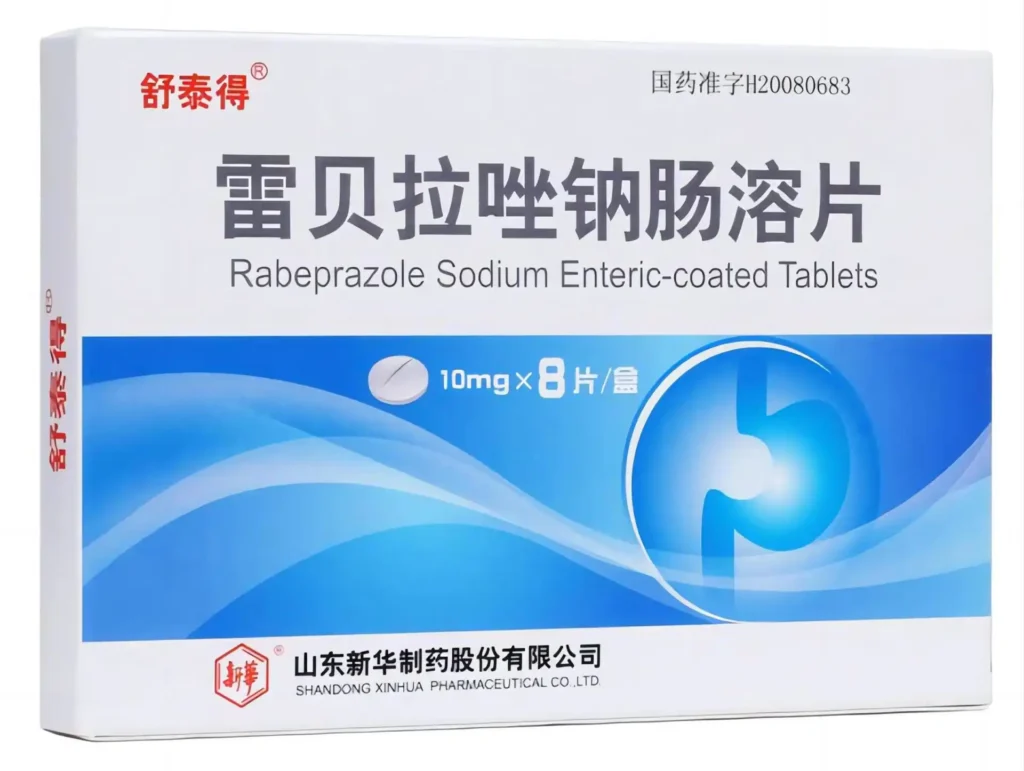Hebei Messi Biology Co., Ltd. states that Rabeprazole is a proton pump inhibitor (PPI) commonly used to treat diseases related to excess stomach acid, but it faces a critical drug development challenge: it is extremely unstable in acidic environments. Therefore, formulation design must protect it from destruction by gastric acid. Enteric-coated and sustained-release preparations are core methods to solve this problem, and Magnesium Oxide (MgO) is one of the key excipients that plays a crucial role in this process.

The following are several major roles of Magnesium Oxide in Rabeprazole sustained-release or enteric-coated preparations:
1. Protecting the Core Stability of the Drug Under Enteric Coating
Although enteric coating can prevent drug release in the stomach, acidic polymers (such as CAP, HPMCP) used during the coating process may still penetrate into the drug core, causing Rabeprazole degradation. As an alkaline substance, Magnesium Oxide can neutralize these acidic substances in the microenvironment after being compressed into the tablet core or blended with Rabeprazole, thereby maintaining drug stability.
- Key Point: Magnesium Oxide adjusts the pH of the tablet core to above 6.0, effectively avoiding “reverse penetration damage” to the core drug by acidic coating materials.
2. Maintaining Microenvironmental pH to Avoid Premature Release
Even under enteric coating, tablets may be exposed to gastric fluid for several hours after swallowing. If there is not enough alkaline environmental protection around the drug core, the coating sometimes “leaks,” leading to partial drug release. Magnesium Oxide can maintain the alkaline environment within the tablet core, avoiding the “sneaky release” of Rabeprazole and improving the precise controlled-release nature of the dosage form.
- Example: Studies show that Rabeprazole enteric-coated tablets with added Magnesium Oxide have a release rate of <1% at pH 1.2, which is far superior to formulations without Magnesium Oxide.
3. Supporting Non-Enteric-Coated Sustained-Release Designs
Some studies and new dosage forms attempt to use Magnesium Oxide + Rabeprazole compound capsule preparations, abandoning enteric coating and instead using Magnesium Oxide to quickly neutralize gastric acid in the stomach, allowing Rabeprazole to be released directly in the stomach while remaining stable. This approach enables faster drug absorption (earlier Tmax) and avoids adverse reactions of enteric coatings (such as delayed release and variable absorption).
- Advantages: Simplifies formulation technology, increases speed of onset, and improves patient compliance.
4. Controlling Release Rate and Cooperating with Sustained-Release Matrix Materials
In sustained-release preparations, Magnesium Oxide can participate in pH regulation and dissolution control. By working synergistically with sustained-release materials such as HPMC and ethyl cellulose, it can fine-tune the release curve of Rabeprazole, enabling stable release at specific intestinal pH levels to achieve a 24-hour acid-suppressive effect.
- Usage Scenario: Suitable for patients with high nocturnal gastric acid secretion, reducing nocturnal stomach pain and reflux.
5. Preventing Drug Discoloration Caused by Maillard Reaction
Rabeprazole is prone to Maillard reaction under humid or heated conditions when it contains reducing sugars or certain excipients, leading to discoloration of the tablet core. Magnesium Oxide provides an alkaline environment that can reduce such side reactions, maintaining the color and chemical stability of the tablet core under long-term storage conditions, which helps improve product appearance quality and patient acceptance.
6. Regulating Release Site: Stomach vs. Intestine Strategy
Although Rabeprazole is generally unsuitable for release in the stomach, some studies have used Magnesium Oxide to regulate local pH, allowing a portion of the drug to be stably released in the stomach, thereby achieving “segmented controlled release” in different sections of the “stomach-small intestine.” This type of formulation design combines particles of different sizes, different coatings, or no coatings to adapt to personalized treatment based on the patient’s gastric acid secretion rhythm.
7. Reducing Dependence on Preparation Sealing Integrity
Traditional enteric-coated tablets have very high requirements for coating integrity; if the coating has micro-cracks or local damage, the drug may fail. After adding Magnesium Oxide, even with slight damage, the tablet core still has a “self-protection” capability, reducing the product rejection rate caused by coating defects.
